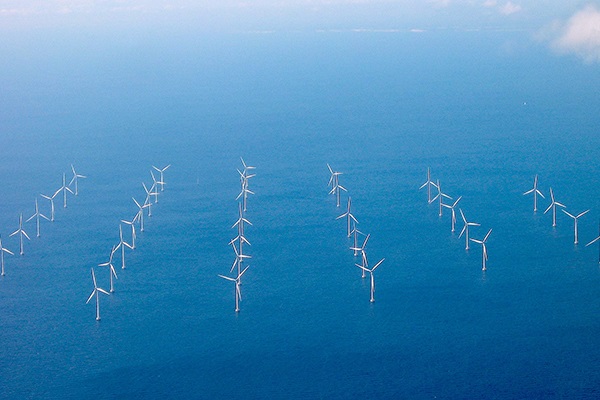Building ’em bigger apparently isn’t the only way to boost the energy output of wind turbines. New research out of the University of Delaware says that by arranging the turbines in an offshore wind farm in a specific formation, energy performance could improve by as much as a third.
“Staggering every other row was amazingly efficient,” Cristina Archer, associate professor of physical ocean science and engineering and geography in UD’s College of Earth, Ocean, and Environment, said in a statement. Not that Archer and her colleagues actually built themselves a wind farm. Rather pricey, that.

What they did do, however, was take an existing wind farm – Lillgrund, off southern Sweden – and by performing “computer-intensive simulations that each took weeks to run” compare the energy generation of different configurations as shifting winds buffet the turbines through the course of a year.
All of this is based on the fact that wind turbines create eddies, “swirls of choppy air,” that can diminish the power-producing capacity of the turbines downwind.
In some simulations, UD said, the researchers kept the turbines in neat rows but spaced them farther apart. “In others, they shifted the alignment of every other row, similar to how rows of theatre seats are staggered to improve the views of people further back.”
The researchers “found that the most efficient arrangement was a combination of two approaches. By both spacing the turbines farther apart and staggering the rows, the improved layout would decrease losses caused by eddies and improve overall performance by a third.”
Now, it is important to point out that the people who build wind farms aren’t oblivious to the importance of how turbines are laid. This release from Dong Energy, for instance, shows how it planned the layout of the Anholt Offshore Wind Farm to optimize generation. But clearly there’s still a lot to learn, and earlier this year the U.K. Carbon Trust launched a big project aimed at “enabling developers to better predict how the wind will flow offshore to enable them to develop better and more efficient designs and layouts which in turn will increase the energy yields from offshore wind farms and in turn improve the economics of the offshore wind projects.”
And one last, important point: There’s a story behind the layout of the Lillgrund wind farm that should be told. The original plan was to build the wind farm using 48 1.5 megawatt turbines, but by the time construction was approved, that size was no longer available, according to owner Vattenfall; instead, they had to use bigger, 2.3 MW turbines.
“With these larger turbines, the spacing between the turbines became very close,” Vattenfall said in an analysis of the wind farm [PDF]. “It would have been possible for Vattenfall to remove some turbines to optimise the layout. (But) a decision was made to continue with the originally planned layout and, consequently, prioritise maximum production instead of maximum profitability.”